What social media platform comes to your mind if you think of influencer marketing? Most likely, Instagram will be the first to come up – or maybe the second. Indeed, Instagram has become the major platform for influencer marketing, with more than 2 billion active users and diverse content formats and features. It would be a missed opportunity for content creators and businesses not to capitalize on Instagram’s broad audience and visual abilities.
But being successful on social media isn’t only about posting. Your Instagram page’s quality can undoubtedly impact your growth and engagement and knowing how to evaluate it will ensure that you maintain an effective presence on the platform.
Before we dive into the topic of how to check Instagram page quality in more detail, let’s have a quick look at what an Instagram page consists of.
What Are the Key Components of an Instagram page?
An Instagram page or more commonly an Instagram account is where users share photos, videos, and stories with their followers on the social media platform. It consists of a user’s profile, posts, reels, and highlights. The profile itself includes the username, profile image, bio, and links. An Instagram page generally displays the follower count, the number of accounts a user follows, the number of posts they publish, and the people who tagged them in their content.
Instagram accounts can be personal, business, and creator accounts. In the case of the latter two, users get access to Instagram Insights as well, the platform’s native analytics feature. Instagram’s in-platform statistics enable account owners to monitor how their posts perform and make data-driven decisions to enhance their content strategy and thus improve their Instagram page’s quality.
What Does an Instagram Page Quality Check Entail?
A complete evaluation of your Instagram account covers the review of your profile information, content, audience, and whether you use Instagram’s features. Such an analysis is vital if you want to maintain brand consistency and competitiveness. It ensures compliance with local and platform rules and enables you to adapt to algorithm changes. Furthermore, it creates an opportunity to discover your shortcomings and weaknesses and identify your strengths.
Profile optimization
Every detail in your profile must show relevance to your brand. Make sure your username is memorable and easily linked to your business. Your profile photo has to be of high quality and recognizable. Most brands use their logos as profile images. For starters, using a logo maker ensures that you have a professional, customizable design without needing advanced graphic skills.
Create a short and striking bio with relevant keywords, hashtags, and emojis. Many brands include their mission or tagline in their bios because the audience already knows these. Finally, provide a link to your website or other social media channels, use Linktree if you have multiple links. Always check whether the links are not broken.
Content analysis
Let’s move to the content part and rest assured assessing your posts, reels, and stories will help you improve your engagement and your relationship with your audience. You can perform this task in so many ways because content can be analyzed in various ways.
Quality: A content quality check involves how coherent your message is and how successfully it tells a story. It has to be creative and unique to capture people’s attention and differentiate yourself from similar accounts in your niche. Understandably, you need to align it with your brand’s identity and you have to maintain this look across all social media channels. Lastly, you must review your content from a technical point of view. Make sure that your videos and photos are well-lit, professionally edited, and well-composed and your videos have a good sound quality.
Niche and audience relevance: These two are correlated since if you post content that is associated with your industry you’ll attract the right audience. Your target audience expects you to publish content that is entertaining, educational, or inspirational, so prove that you’re an expert in your topic. The more you learn about your audience and their reactions the easier you can tailor content to their needs and provide solutions to their pain points or interests.
Keywords, hashtags, captions: Be mindful of what and how many hashtags and keywords you use in your captions. Although, Instagram lets you use up to 30 hashtags, try to use a maximum of five for clarity and transparency. Make sure to use niche-specific, trending, and broader hashtags. It’s needless to say, the captions must complement your posts, reels, and stories. Match your caption’s tone and voice to your brand’s personality and of course, don’t forget about a call to action.
Posting frequency: Constantly monitor your audience’s behavior and determine what days and times they are the most active. Time your content uploads to those periods to ensure the highest reach and engagement. Maintain a consistent posting schedule. There is no one-size-fits-all number here, you have to determine that for yourself. According to Adam Mosseri, Head of Instagram, it is best to post one to two stories per day and two to three posts a week.
Audience evaluation
Let’s put into practice what we mentioned earlier about your audience. That is, the more you know about them the better content you can create.
Demographics and psychographics: Gather information about their age, gender, location, language, and interests. Compare the traits of your followers to those of your target audience. If they match, then you’re doing a good job.
Growth: Closely monitor your follower growth weekly, and monthly. Identify spikes and drops and investigate what caused those dynamic activities. Sudden movements may suggest that there are issues you need to attend to or one of your posts went viral, while steady growth means your audience is growing organically.
Authenticity: Quantity is good if you want to increase your visibility but quality will ensure that your followers will engage with your content and products. To do this, you regularly need to comb through your followers and remove fake accounts. Another way to check audience authenticity is to monitor the quality of engagements. Irrelevant comments or responses that seem automated are produced by bots.
Performance analysis
A great indicator of how well your content resonates with your audience is tracking key metrics, like shares, likes, comments, views impressions, reach, profile visits, and calculating engagement rate. You may add other metrics such as clicks and website traffic but you’ll need to use a third-party tool for that.
Likes, shares, and comments are the most common engagement types. They let you know what content is preferred by most users, which encourages them to share their thoughts on it or spread it among their communities. Once you gather this data you can focus on creating posts and videos that gather the most likes, shares, and comments and grow steadily your engagement.
Examine impressions, reach, and views and compare them to your follower growth. Was your video watched by a lot more people than your current follower count? That means that it went viral. It makes sense to take a look at the engagement of the most viewed videos and those posts that reached a high number of people. It shows that your content was successful in terms of storytelling.
Of course, once you have enough information about your posts’ engagement metrics you can calculate the engagement rate of a campaign or individual posts and reels. Assess how your ER changes as you grow your followers and you may compare it to industry benchmarks or your competition.
Now, check your engagement rate for free by simply entering your username here:
Legal compliance
Lastly, checking legal compliance is crucially important if you plan to collaborate with another business or influencer on Instagram. Naturally, you must follow Instagram’s community guidelines when you create branded content and avoid disrespectful and spammy posts and videos.
If you run contests you need to create transparent requirements and rules. Furthermore, if you use content generated by other users you must ensure you have their permission to reuse or repurpose them. Whenever an influencer is promoting your brand they must indicate this to the audience with adequate hashtags. The lack of these steps can result in distrust in your brand which eventually leads to follower drop.
Checking Your Brand's Instagram Page Quality
If you choose to go the manual way, Instagram’s native analytics feature can help you monitor your Instagram page’s performance, and your audience’s characteristics and behavior and provide you with some data related to your profile.
Every Business and Creator account on Instagram has access to Instagram Insights and while most people use it to check their Instagram media performance it can give you valuable information about your account such as profile views, and email, phone, and website clicks initiated from your bio. So, ensure that the data in your bio is correct and people can easily navigate to your website, product page, or blog through your Instagram page.
The platform gives information about the number of accounts that engaged with your posts, live videos, and reels and how many people your content reached. Instagram also shows your top content that garnered the widest exposure. And you can get a sneak peek into their age, gender, and location and whether they are your followers or not.
As you see, Instagram’s analytics feature enables you to audit your Instagram page quality, especially focusing on content performance and providing essential data on audience and interactions with your profile. It is a good start but you’ll still need to use several third-party tools if you want to understand your Instagram marketing in full.
Tools can help you assess your audience and performance data in more detail. Not to mention when you run a campaign, some tools automatically calculate its overall ER, and ROI. This is something you have to do manually even if you use Instagram’s native analytical tool.
A major disadvantage of Instagram’s in-platform feature is that you can check only your Instagram page. To conduct an Instagram competitor analysis or examine potential content creator partners, you’ll definitely need a tool.
Studying Other Instagram Pages with an Analytics Tool
Of course, there are numerous tools on the market to analyze, content, competitors, followers, and social media performance. The most versatile tool to use could be an analytics tool. They provide data on your audience’s age, gender, location (including top countries and cities), language, and interests. Some tools, like HypeAuditor’s Instagram reports offer insights into the audience’s educational and financial background based on the information they share on their social media bios and feeds.
In-depth audience data comes in handy when you analyze influencers for potential partnerships. Apart from evaluating their engagement, reach, and brand alignment, you must thoroughly review their followers’ traits. Apart from demographics, the Instagram analytics report by HypeAuditor shows you how their follower and following growth looks. Remember, that too many ups and downs on the graph can mean that they use follow-unfollow tactics or bought accounts to grow their audience.
Make sure to thoroughly check the audience proportion of Instagram influencers. Choose creators whose audience consists mostly of real people and influencers.
 An example of high- and poor-quality Instagram audiences from HypeAuditor’s Audience analytics
An example of high- and poor-quality Instagram audiences from HypeAuditor’s Audience analytics
Furthermore, the tools provide you with data about your competitors' campaigns, putting them over and above manual analysis. Even though you can gather much information about other brands’ Instagram content and their performance, and who mentions and tags them by overviewing their accounts, these datasets are all part of complete analytics reports you can access through tools.
Above these, they calculate the ER and reach and determine posting frequency based on public data and online activities. In the case of campaigns, you’ll be able to see EMV, ROI, and budget estimates, again relying on general data and benchmarks. You would have to go through multiple posts and reels to calculate an ER, as well as do a lot of research to find all the relevant benchmarks and data that allow you to measure a competitor's financial success.
Conclusion
Checking an Instagram page’s quality is a multifaceted process that involves the analysis of various elements of an account. Auditing your Instagram account can provide you with valuable information on your growth but to maintain a strong Instagram presence and your brand’s reputation you must assess the performance, audience, and profile of your competitors and possible influencers as well.






